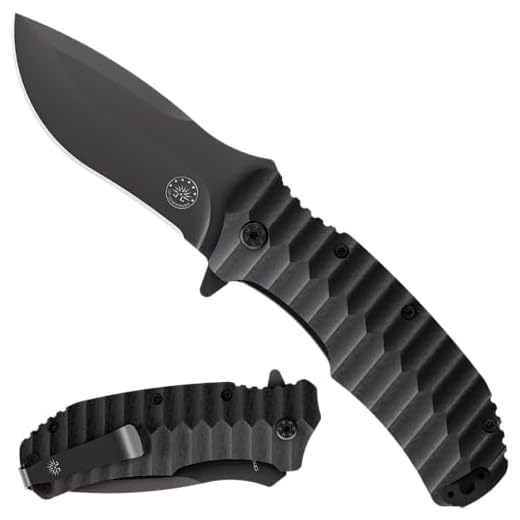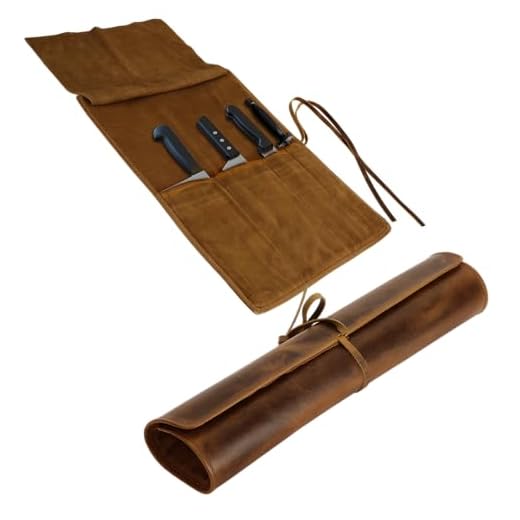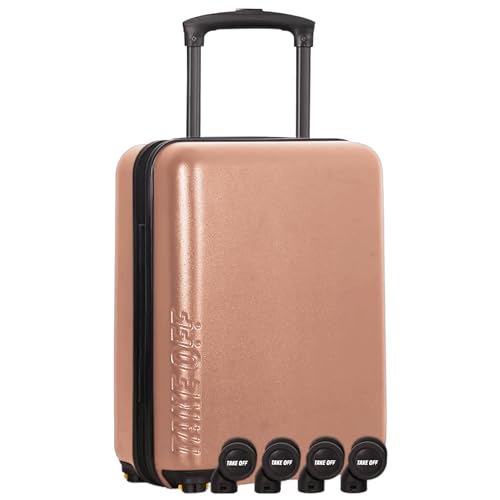




Immediate rule: For U.S. departures the Transportation Security Administration permits cutting implements only in checked baggage; carrying a blade through a security checkpoint in a hand-held bag will lead to confiscation and possible enforcement action. Verify the same principle with your carrier for domestic and international flights.
Packing method: sheath the cutting implement, wrap the covered blade in fabric, secure the sheath with tape, place the item inside a hard-sided case or a well-padded compartment within checked baggage, and lock the case if allowed. Keep purchase receipts or ownership documentation in case screening personnel request proof. Avoid leaving exposed edges or loose tools that can shift during handling.
Item types and restrictions: folding pocket tools and multi-tools are acceptable in checked bags; automatic-opening mechanisms, ballistic or disguised implements, and large fixed blades are frequently prohibited by airlines and national laws. Many carriers explicitly ban switchblades and butterfly-style tools regardless of bag type–check the carrier’s prohibited items list before travel.
International travel: regulations vary sharply by destination. Some jurisdictions restrict blades by blade length (common cutoffs reported around 6 cm to 12 cm) or by mechanism; others impose zero-tolerance criminal penalties, including arrest, fines, and long-term confiscation. Before departure consult the destination country’s customs or interior ministry guidance, the airline’s international policy, and the nearest embassy or consulate if doubts remain.
Preflight checklist: consult the departure country’s civil aviation authority or security agency webpage, review your airline’s terms, photograph the packed item and retain proof of purchase, declare items to check-in staff if requested, and arrive earlier to accommodate potential additional screening of checked baggage containing tools.
Permitted bladed tools in checked baggage: U.S., EU and IATA rules
Pack all bladed items only in checked baggage, sheathed or inside a locked hard case, and confirm airline plus origin/destination laws before travel.
United States (TSA)
TSA allows blades in hold baggage and prohibits them in the cabin. The agency does not publish a federal blade-length limit for checked items; automatic/opening designs (for example, switchblades) are permitted in checked bags per TSA guidance, but possession or transport may be restricted by state or local statutes. Secure sheathing, immobilize folding mechanisms, and place blades in a hard container or wrapped to prevent injury to baggage handlers. Expect individual carriers to refuse oversized or weapon-like items at check-in; declare such items if requested by the airline.
European Union and IATA guidance
EU security rules forbid sharp objects in the cabin; acceptance in checked baggage is governed by airline policies and national criminal law of member states. Several jurisdictions within the EU classify automatic, gravity, butterfly and disguised blades as illegal to possess or import – transport in the hold may still breach those laws. IATA and ICAO do not list ordinary bladed tools as dangerous goods, but their guidance urges secure packing and adherence to carrier requirements; airlines commonly set size/type limits and may demand advance notification for swords, large machetes or militarystyle items. Battery-powered cutting devices and tools with lithium cells are subject to separate battery/transport rules and often require airline approval.
Packing checklist: sheath each blade; place in locked hard case or box; pad to prevent movement; separate from household goods; tape any folding mechanism closed; keep purchase/ownership documents for antiques/collectibles; check carrier policy and both origin and destination criminal statutes; declare oversized or weapon-like items at check-in and avoid transporting prohibited categories (automatic or disguised blades) across borders.
Packing and securing a blade for checked baggage
Place the blade in a rigid, lockable container (Pelican-style case, ammo box or purpose-made tool case) with a fitted foam or dense closed‑cell foam insert that eliminates movement.
Protect the cutting edge with a molded sheath (Kydex or hard plastic) or a commercial blade guard; if neither is available, wrap the edge in two layers of heavy cardboard, cover with at least two wraps of cloth or gaffer tape, then add a 5 mm layer of bubble wrap.
Immobilize the item inside the case by cutting a foam cradle to the exact profile or by using foam wedges and zip ties; there should be no perceptible shift when the case is shaken.
Enclose the rigid container within the checked baggage’s center, surrounded by a minimum of 2 inches (5 cm) of soft padding (rolled clothing, towels or foam) on every side and beneath, keeping it away from zippers and exterior seams.
Use a hard‑sided checked bag or a separate hard case for the container; secure the bag with a TSA‑approved lock so security agents can open it without damaging the closure.
Label the external case with your contact details and keep purchase receipts or provenance documents in your carry items to show provenance if an agent requests verification at check‑in or on arrival.
Before travel, check origin and destination restrictions for specific models (assisted‑opening mechanisms, gravity knives or certain serrated designs may be prohibited) and follow any airline reporting or declaration procedures at check‑in.
Final checklist before handing to the airline: rigid locked container in center of bag, edge sheathed and taped, foam cradle preventing movement, 2 in (5 cm) padding all around, TSA‑approved lock on the bag, receipts accessible in carry.
What blade types, blade lengths and mechanisms lead to confiscation or legal risk
Avoid transporting automatic (spring‑released), gravity‑activated, or one‑hand‑opening locking blades: these categories attract the highest seizure rates and criminal exposure across jurisdictions.
Automatic/switchblade mechanisms – legal risk: very high. U.S. federal Switchblade Act restricts interstate commerce of automatic blades and many states prohibit possession; numerous European countries treat automatic openings as prohibited weapons. Expect immediate seizure and possible prosecution where local law bans them.
Gravity knives and similar quick‑deploy mechanisms – legal risk: very high. Several countries and some U.S. states classify gravity‑style openings as illegal regardless of blade length; enforcement often includes arrest rather than simple confiscation.
Butterfly (balisong) and one‑hand‑deploying locking folders – legal risk: high. Many jurisdictions prohibit one‑hand opening folders with locking systems because they enable rapid deployment; carry or transport of these items often results in seizure and fines or charges.
Fixed blades, daggers and double‑edged tools – legal risk: high. Fixed, full‑tang blades and symmetrical daggers are treated as offensive weapons in most criminal codes; possession in public or during transit commonly leads to confiscation and possible criminal proceedings.
Long blades and machetes – legal risk: high. Blades of large length used as cutting or combat tools are routinely seized; even where transport is allowed under specific conditions, long cutting tools trigger inspections and legal scrutiny at borders and checkpoints.
Folding non‑locking blades and short utility cutters – legal risk: lower but conditional. In several countries a folding blade without a locking system and with blade length ≤3 in (≈7.6 cm) is the least likely to prompt prosecution (for example, UK practice regarding folding non‑locking blades). This lower risk does not eliminate seizure if local rules differ or if the item appears concealed or intended for harm.
Blade length thresholds to watch (examples): UK – folding non‑locking blades ≤3 in (≈7.6 cm) carry the least legal exposure in public; Germany – fixed blades and many one‑hand opening folders over ≈12 cm are commonly prohibited from carry; U.S. – no single federal length limit for civil possession but state laws vary widely and automatic mechanisms remain restricted. Verify the exact metric in destination and transit countries before moving any cutting implement.
Features that increase enforcement likelihood: locking mechanisms, one‑hand opening, assisted/spring deploy, double edge, concealed carry (hidden sheaths or modified handles), military‑style designs, and aftermarket mods that enable rapid deployment. Customs and law enforcement prioritize items combining several of these traits.
Practical recommendations: do not transport automatic, gravity, butterfly or one‑hand‑locking blades unless you hold a jurisdictional permit; avoid fixed daggers and long combat‑style tools; if transport is unavoidable, consult destination and transit criminal codes and, where applicable, obtain written authorization or export/import permits before moving the item.
How to declare blades, handle customs checks and transport across international borders
Declare every blade or cutting implement at the first customs point (departure and arrival) with receipt, serial number and any import/export permit; non-declaration frequently leads to seizure, fines or criminal charges.
- Before travel – documentation:
- Obtain written proof of purchase, maker’s name and serial number; photograph item clearly from multiple angles.
- Check destination, transit and origin rules via official customs websites (use specific country search, e.g., CBP, HM Revenue & Customs, EU TARIC).
- For temporary movement for shows/exhibitions, use an ATA Carnet or a temporary importation permit; for commercial shipments hire a customs broker.
- If handle materials include regulated wildlife products (ivory, tortoiseshell), secure CITES permits before movement.
- Packing and transport choices:
- Prefer shipment in a locked, hard-sided case sent as declared cargo with commercial invoice and HS classification (general category: HS 8211 for cutting implements) rather than placing in checked baggage when legal clarity is absent.
- When carrying in hold baggage, sheath the blade, immobilize it, and place documentation in an external, labeled pouch for quick presentation to inspectors.
- Keep small travel essentials (example: best digital camera compact flash card) and weather gear (example: best strong small umbrella) in your carry-on to avoid mixed inspections of valuables and declared items.
- At customs inspection:
- Present documents first: purchase receipt, permits, photos and serial number list.
- Allow officers to inspect; do not obstruct. If they seize the item, request a written seizure notice with contact info, legal basis and instructions for appeal.
- If detained or faced with enforcement action, request consular assistance immediately and keep records of officer names, badge numbers and timestamps.
- Transit and connecting flights:
- Apply the strictest rule among origin, transit and destination jurisdictions; an item legal at origin can be prohibited in transit or on arrival.
- For multiple carriers, notify each airline and confirm carriage policy in writing when possible; obtain written permission for any special handling (e.g., acceptance via checked/hold cargo).
- Shipping commercially vs personal carriage:
- Commercial export requires correct HS code, invoice, possible export license and import license at destination; incomplete paperwork causes customs holds and return/shipment destruction.
- Personal effects shipped by courier should be declared as such, include ID and receipts, and be consigned with a broker if destination rules are restrictive.
- If told item is prohibited:
- Do not attempt concealment or false declarations; penalties escalate quickly.
- Ask for administrative destruction or re-export options; get written confirmation of chosen resolution and a receipt for the item.
Keep records for at least one year after travel: declared forms, permits, correspondence with airlines and customs, and any seizure receipts to support appeals or insurance claims.







